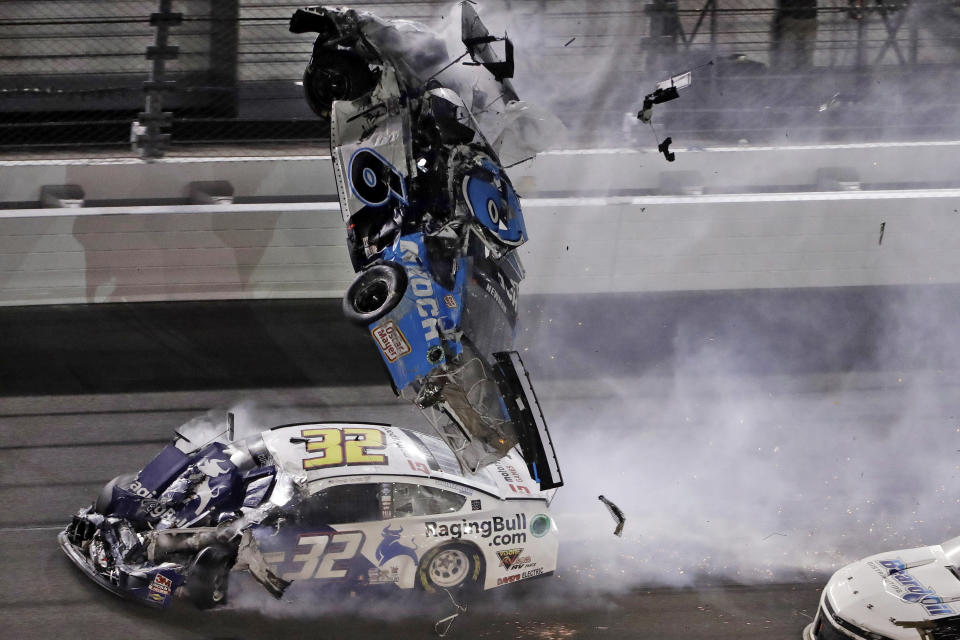NASCAR makes changes to car specifications at Daytona and Talladega in wake of Ryan Newman's crash
NASCAR is making some changes for Cup Series races at Daytona and Talladega after Ryan Newman’s horrific wreck on the final lap of February’s Daytona 500.
Newman’s car careened into the wall off Ryan Blaney’s bumper as he was racing toward the finish line. It flipped over after impact with the wall and was struck by Corey LaJoie’s car at full speed on the driver’s side while upside down. It then skidded down the track while on fire.
After examining Newman’s car over the past two months, NASCAR is mandating that teams run two additional roll bar support pieces in the general area where Newman’s car was hit. The changes come after Newman suffered a head injury in the crash and had to be extricated from his vehicle and immediately transported to a hospital.
“As teams prepare for the return to racing, we want to provide as much advance notice as possible for upcoming technical changes,” NASCAR vice president John Probst said. “Some of these updates stem from the investigation into the six-car incident at Daytona, and all are intended to produce a safe and competitive race at all venues. We look forward to providing more details in the near future.”
NASCAR is also requiring teams to install an extra oil flow valve at Daytona and Talladega. The fire on Newman’s car was fueled by leaking oil.
The roll bar reinforcements are optional at all other tracks.

Engine and aerodynamic changes too
The changes as a direct result of Newman’s wreck are not the only ones NASCAR is instituting. The sanctioning body is making slight cuts to the air flow into the engine in an effort to dampen acceleration while also eliminating the use of air ducts at the two tracks.
The air ducts were helping teams draft with each other, but closing rates had increased dramatically in recent races at Daytona and Talladega. Those closing rates coupled with mistimed blocks were leading to lots of crashes as drivers couldn’t drive like they had become accustomed to at either track.
The throttle reductions come as NASCAR uses a tapered spacer in the engines at all tracks. Restrictor plates were previously installed on the engines at Daytona and Talladega in efforts to limit airflow, tamp down speeds and promote drafting and pack racing. But as NASCAR moved to different rules at all of its tracks in 2019, restrictor plates were last used at the 2019 Daytona 500.
Newman and NASCAR set to return May 17
Newman walked out of the hospital with his daughters days after his crash, though he hasn’t been in a NASCAR race since. He announced a week ago that he would return when NASCAR did and the sanctioning body said Thursday that it was planning to hold a Cup Series race at Darlington on May 17. That race will be the first of seven planned NASCAR races in 11 days as the Cup Series will race four times, the Xfinity Series will race twice and the Truck Series will race once.
– – – – – – –
Nick Bromberg is a writer for Yahoo Sports.
More from Yahoo Sports:


